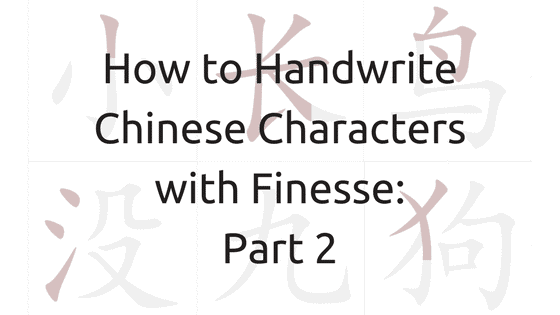This is the second half of our article on how to handwrite Chinese characters addressing some more complex strokes. If you haven’t already, don’t forget to take a look at the first part of our post: How to Handwrite Chinese Characters with Finesse.
钩画的写法 (gōu huà de xiě fǎ) How to write the ‘Gou’ Stroke
横钩 (héng gōu) ‘Heng Gou’ Horizontal Line with a Tick
First, write the 一 ‘heng’ stroke, then wield the pen down to the left to write the hook. End with a light sharp point. Note that the hook should be small and short.
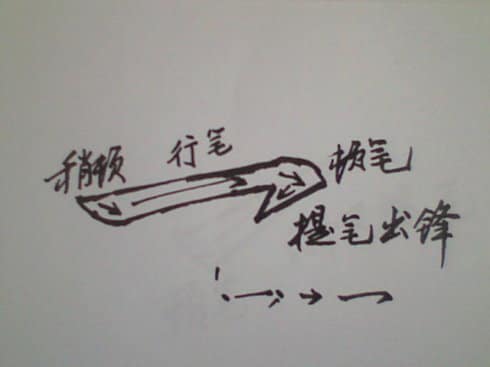
Example Character: 买 (mǎi)
The ‘heng gou’ stroke is the first stroke found on the top of the character.
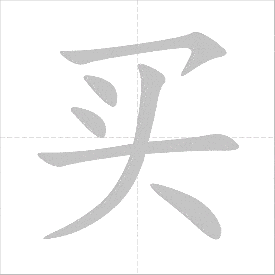
竖钩 (shù gōu) ‘Shu Gou’ Vertical Line with a Tick
Write the丨’shu’ stroke, wielding the pen up to the left to write a hook. End with a sharp point. The hook should be at a 45-degree angle and short.
Note: Take a look at the difference between this stroke and the 弯钩 stroke which is slightly more curved.
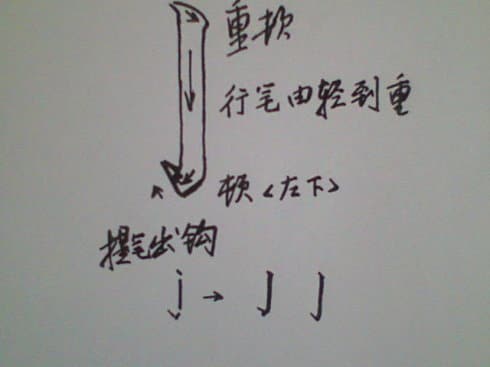
Example Character: 小 (xiǎo)
The ‘shu gou’ stroke is the second stroke found in the center of the character.
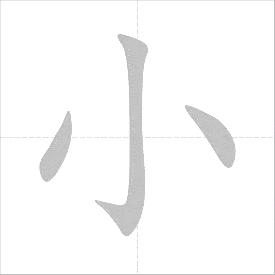
竖提 (shù tí) ‘Shu Ti’ Vertical Line with an Upward Tick
Write the丨’shu’ stroke, wielding the pen up to the right to write a ㇀’ti’. Finally ending with sharp point.
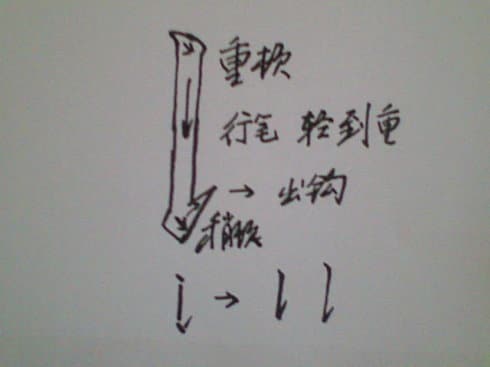
Example Character: 长 (cháng)
The ‘shu ti’ stroke is found in the second stroke on the left-hand side.
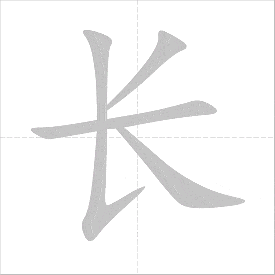
横折钩 (héng zhé gōu) ‘Heng Zhe Gou’ Horizontal Line Followed by a Right Angle and Tick
Start with a short 一 ‘heng’, wielding the pen down and slightly to the left to write a丨 ‘shu’ stroke. Follow this with a hook, and end with a sharp point. It should be written in one stroke, meaning the pen should not come off the paper.
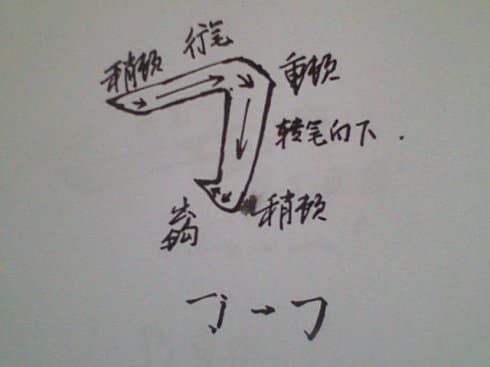
Example Character 勺 (sháo)
The ‘heng zhe gou’ stroke is the second stroke in the character.
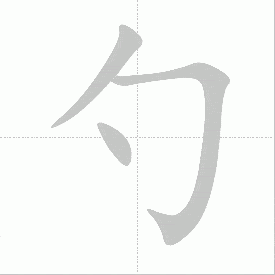
竖折折钩 (shù zhé zhé gōu) ‘Shu Zhe Zhe Gou’ Vertical Folding Hook
Start with short a丨’shu’ stroke, wielding the pen right to write 一 ‘heng’. Then wield the pen down to the left to write亅’shu gou’, and end with sharp point. Note that the 亅should not be too vertical and the hook should be small.
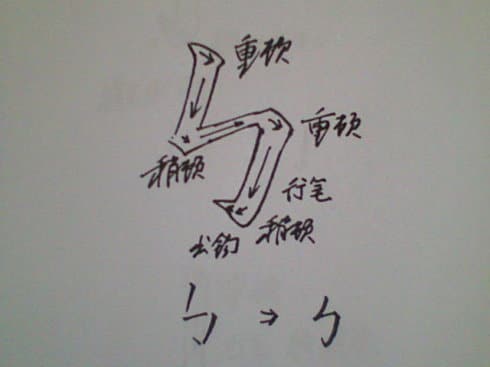
Example Character: 鸟 (niǎo)
The ‘shu zhe zhe gou’ stroke is the fourth in the character.
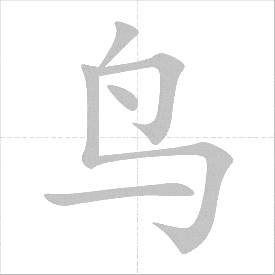
横撇弯钩 (héng piě wān gōu) ‘Heng Pie Wan Gou’ Horizontal Bending Hook
Start with short a 一 ‘heng’ stroke, then turn to write a short 丿’pie’. Finally, add a small hook to top left.
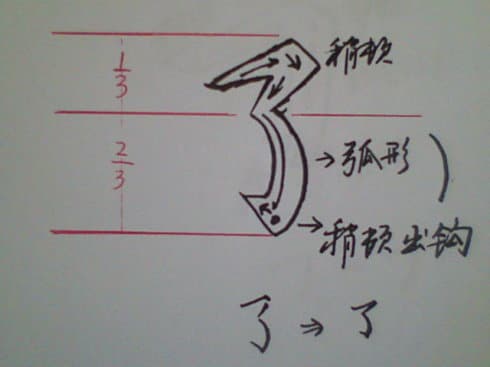
Example Character: 子 (zǐ)
The ‘heng pie wan gou’ is the second stroke.
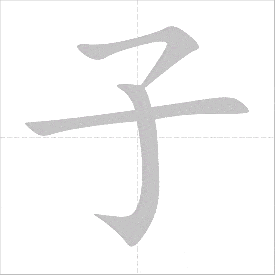
横折折折钩 (héng zhé zhé zhé gōu) ‘Heng zhe zhe zhe gou’ Folding Hook Cross Fold
Start with a short 一 ‘heng’ (the right side should be a little bit higher) and turn to write a short 丿, then turn again to write a short 一 ‘heng’. Finally, turn down to the left to write a hook. Note that the last part should be an acute angle.
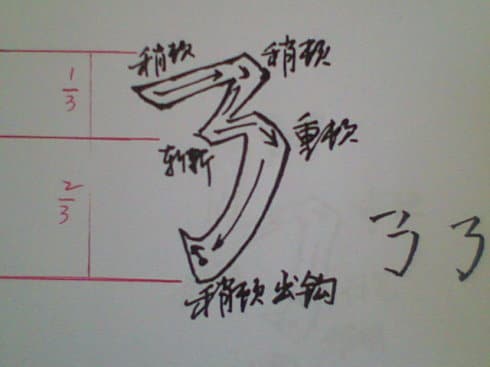
Example Character: 奶 (nǎi)
The ‘heng zhe zhe zhe gou’ stroke is found in the second half of the character on the right-hand side.

横折提 (héng zhé tí) ‘Heng Zhi Ti’ Horizontal-Starting Right Angle With an Upward Tick
Start with short a 一 ‘heng’ stroke, then turn to write 丨’shu’. Turn right to write ㇀’ti’, and end with a sharp point. The ㇀’ti’ should be short and inclined.
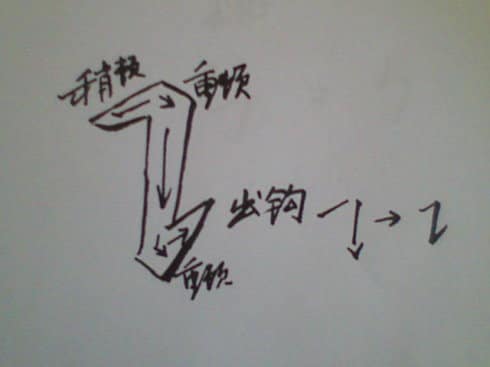
Example Character: 话 (huà)
The ‘heng zhi ti’ stroke is the second stroke in the ‘speech’ radical on the left-hand side.
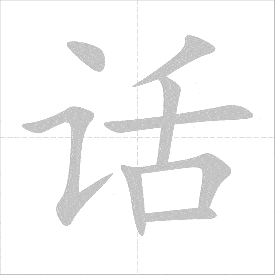
折画的写法 (zhé huà de xiě fǎ) How to write the ‘Zhe’ Stroke
横折 (héng zhé) ‘Heng Zhe’ Horizontal-Starting Right Angle
Start with the 一 ‘heng’ stroke, then turn to write the 丨’shu’ stroke. It should be finished in one stroke, and the end cannot be a sharp point.
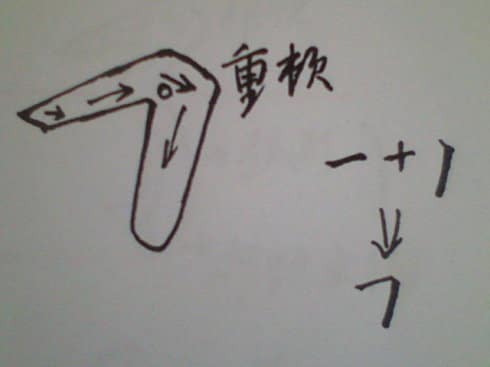
Example Character: 中 (zhōng)
The ‘heng zhe’ stroke is the second stroke.
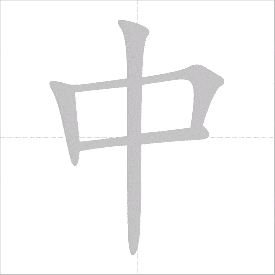
竖折 (shù zhé) ‘Shu Zhe’ Vertical Fold
Start with the 丨 ‘shu’ stroke. This is sometimes short and sometimes a long stroke. Turn right to write a 一 ‘heng’ stoke and end heavily. It should be finished in one stroke.
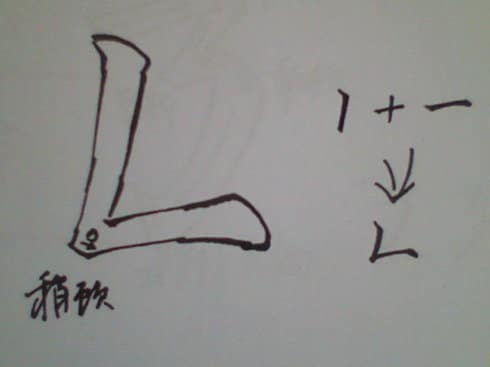
Example Character: 区 (qū)
The ‘shu zhe’ stroke is the fourth stroke in the character.
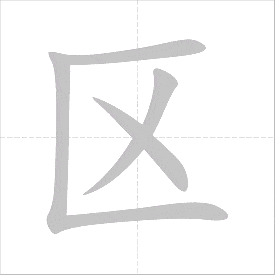
横撇 (héng piě) ‘Heng Pie’ Horizontal Downward Stroke
Start with a short 一 ‘heng’ and then turn left to write 丿 ‘pie’. It should be finished in one stroke, and the right side of 一 ‘heng’ should be a little higher.
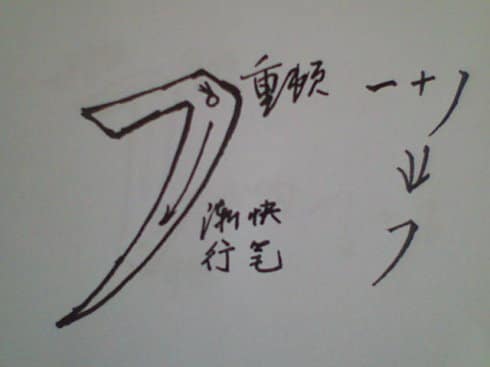
Example Character: 又 (yòu)
The ‘heng pie’ stroke is the first in this character.
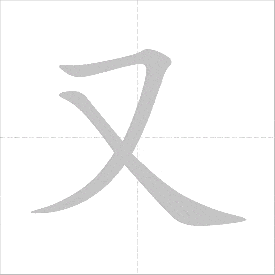
撇折 (piě zhé) ‘Pie Zhe’ Left-Slanting Downward Stroke
Start with a short 丿 ‘pie’ then turn at the top right to write ㇀’ti’ and then end with a sharp point.
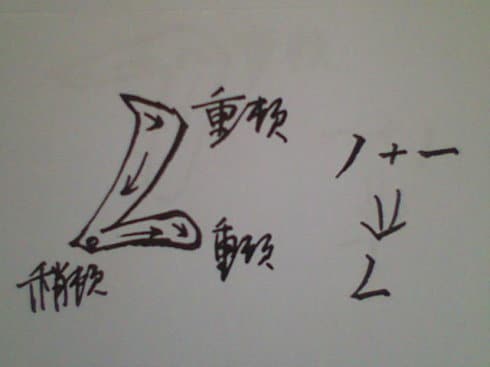
Example Character: 东 (dōng)
‘Pie zhe’ is the second stroke in the top half of the character.
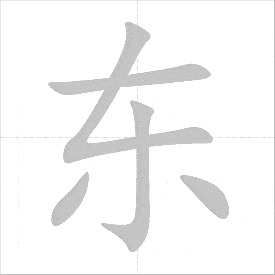
撇点 (piě diǎn) ‘Pie Dian’ Left-Slanting Downward Dot
Start with 丿 ’pie’, then turn down to the right to write a long 丶’dian’ ending the stroke heavily. Note the angles of 丿 and 丶.
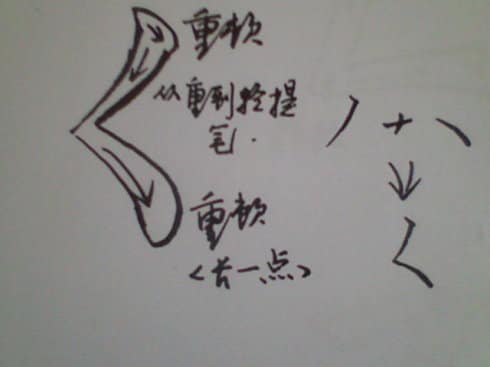
Example Character: 女 (nǚ)
‘Pie dian’ is the first stroke in the 女 (nǚ) character.
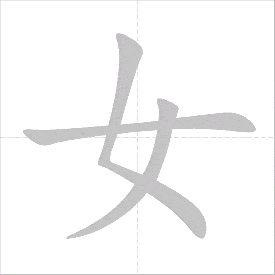
竖折撇 (shù zhé piě) ‘Shu Zhe Pie’ Vertical Fold
Start with an inclined 丨 ‘shu’ then turn to write a short 一 ‘heng’. Finally, turn down to the left to write a short 丿’pie’.
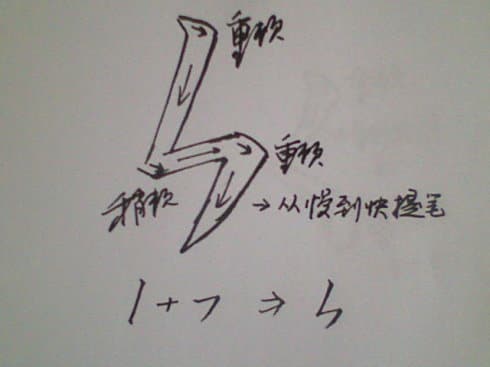
Example Character: 专 (zhuān)
‘Shu zhe pie’ is the third stroke in the character.
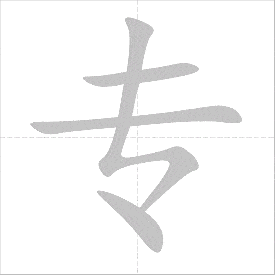
横折折撇 (héng zhé zhé piě) ‘Heng Zhe Zhe Pie’ Horizontal-Starting Right Angle With Left-Slanting Downward Stroke
Start with a short 一 ‘heng’ stroke then turn down to the left to write a short 丿 ‘pie’ without a sharp point. Write a short 一 ‘heng’, and finally turn down to write 丿 ‘pie’.
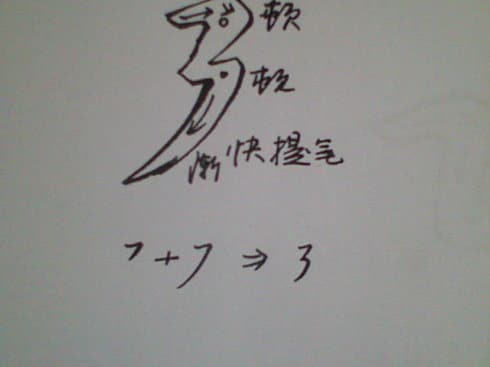
Example Characters: 及 (jí) and 建 (jiàn)
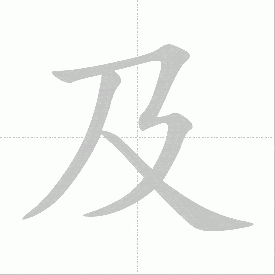
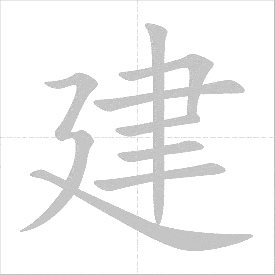
含有“弯”的笔画的写法 (hán yǒu ‘wān’ de bǐ huà de xiě fǎ) How to write Strokes containing ‘wan’
弯钩 (wān gōu) ‘Wan Gou’ Hook
Start from light to heavy to write bend and hook. The start and end should be on the same vertical line.
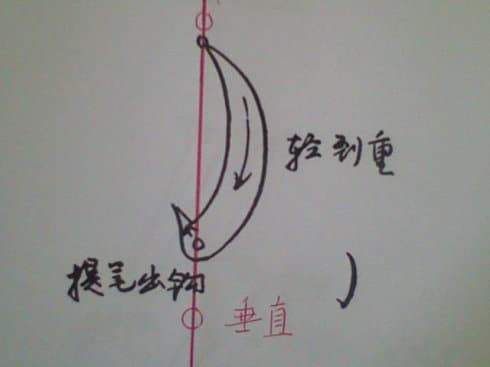
Example Character: 狗 (gǒu)
‘Wan gou’ is the second stroke of the 狗 (gǒu) character.
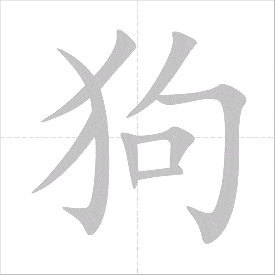
斜钩 (xié gōu) ‘Xie Gou’ Concave Hook
Start heavily, wielding the pen down to the right to write the bend and hook.
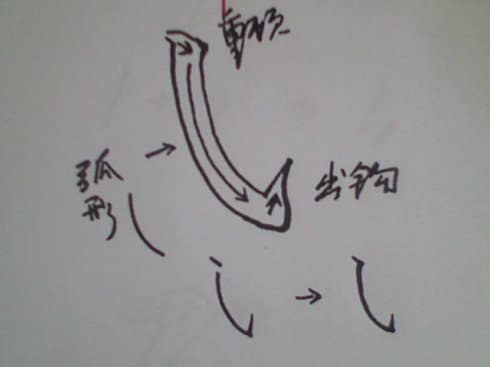
Example Character: 我 (wǒ)
‘Xie gou’ is the fifth stroke in the 我 (wǒ) character.
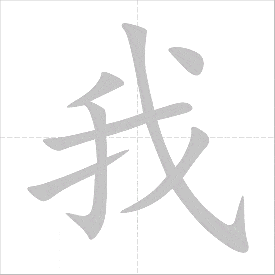
卧钩 (wò gōu) ‘Wo Gou’ Lying Hook
Start light, wielding the pen down to the right first, then turn right to write the bend and hook.
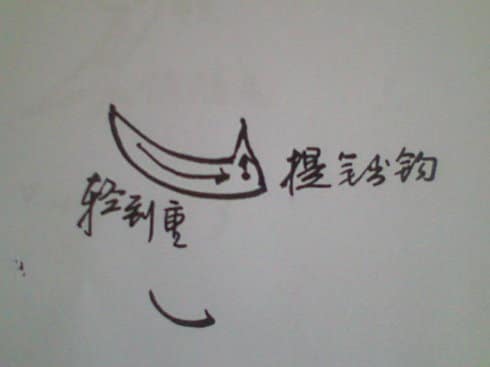
Example Character: 必 (bì)
The ‘wo gou’ stroke is the second one.
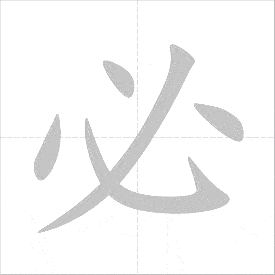
竖弯钩 (shù wān gōu) ‘Shu Wan Gou’ Vertical Hook
Start with a 丨’shu’ stroke a bit heavily, turn right bend to write the 一 ‘heng’ stroke and hook.
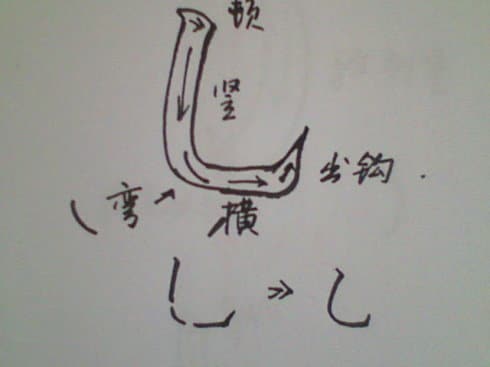
Example Character: 乱 (luàn)
‘Shu wan gou’ is the right-hand side of the 乱 (luàn) character.
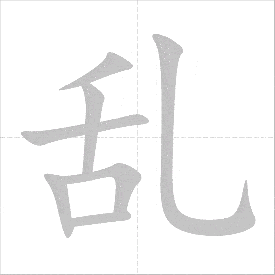
横折弯钩 (héng zhé wān gōu) ‘Heng Zhe Wan Gou’ Bending Hook
Start with the 一 ‘heng’ stroke, then turn to write 丨 ‘shu’. Finally, make a right bend to write 一 ‘heng’ and a hook.
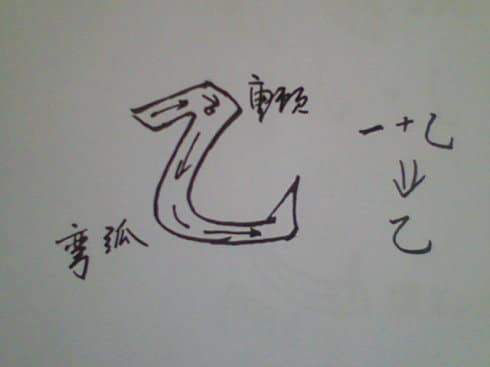
Example Character: 九 (jiǔ)
‘heng zhe wan gou’ is the second stroke in the 九 (jiǔ) character.
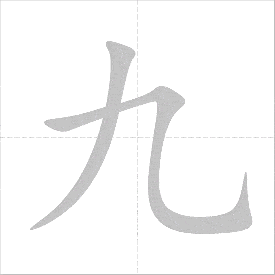
横折弯 (héng zhé wān) ‘Heng Zhe Wan’ Horizontal Bend
Start with a short 一 ’heng’ stroke, then turn to write a short丨’shu’ stroke. Finally, take a right bend to write a short 一 ‘heng’, and end heavily.
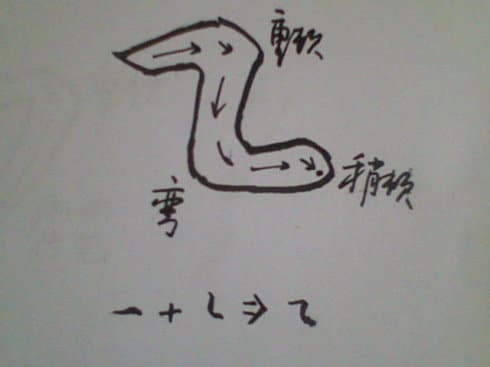
Example Character 没 (méi)
The ‘heng zhe wan’ stroke is the fifth stroke on the top of the character.
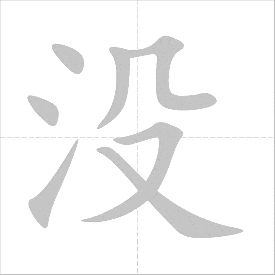
If you have any questions or comments, please leave them below!
